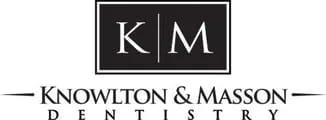Inlays and onlays are indirect restorations used to repair molars and premolars damaged by decay or trauma. Inlays and onlays fit more securely and last longer than fillings, strengthen compromised teeth, and preserve more natural tooth structure than crowns.
 An inlay is used to restore the center of the tooth inside the cusps. Cavities, small cracks and fractures, and other damage are treated with an inlay when a large filling would weaken the structure of the tooth.
An inlay is used to restore the center of the tooth inside the cusps. Cavities, small cracks and fractures, and other damage are treated with an inlay when a large filling would weaken the structure of the tooth.

An onlay typically covers the center of the tooth and one or more cusps. An onlay prevents further cusp and tooth damage when a cusp is cracked, broken, or decayed. Because an onlay is placed only on the damaged part of the tooth, it is a less extensive procedure than a crown and preserves more of the natural tooth.
Direct restorations like dental fillings can be completed in a single appointment. Indirect restorations require at least two appointments, because the inlay or onlay is fabricated outside the office.
- At the first appointment, the area is numbed, and the tooth treated for decay or injury. The tooth is then cleaned and shaped for the restoration.
- An impression is taken of the tooth.
- The tooth is given a temporary inlay or onlay to seal and protect it.
- The impression is sent to a lab. Using this model, a restoration is carefully fabricated to fit the exact dimensions of the tooth.
- Once the fabrication is complete, the temporary filling is removed, the permanent inlay or onlay is positioned for an ideal fit, and the restoration is bonded to the tooth surface.
In the past, gold was used for both inlays and onlays. Today, there are several options available to suit different aesthetic concerns and price points.
- Gold restorations are fabricated from gold alloyed with other metals. While they are the most durable option, they are more expensive, and they can be conspicuous.
- Ceramic and porcelain restorations are tinted to blend with tooth enamel and are both durable and stain resistant. They are roughly similar in cost to gold restorations.
- Composite restorations are the most cost-effective option and are also tinted to match the tooth’s natural color. They aren’t as stain resistant as ceramic and porcelain and are slightly less malleable than other options.
When a tooth is too damaged for a filling, but doesn’t need the complete coverage a crown provides, an inlay or an onlay can be the ideal restoration. Talk to your dentist to discover the best option to restore both the appearance and the function of your injured tooth.
